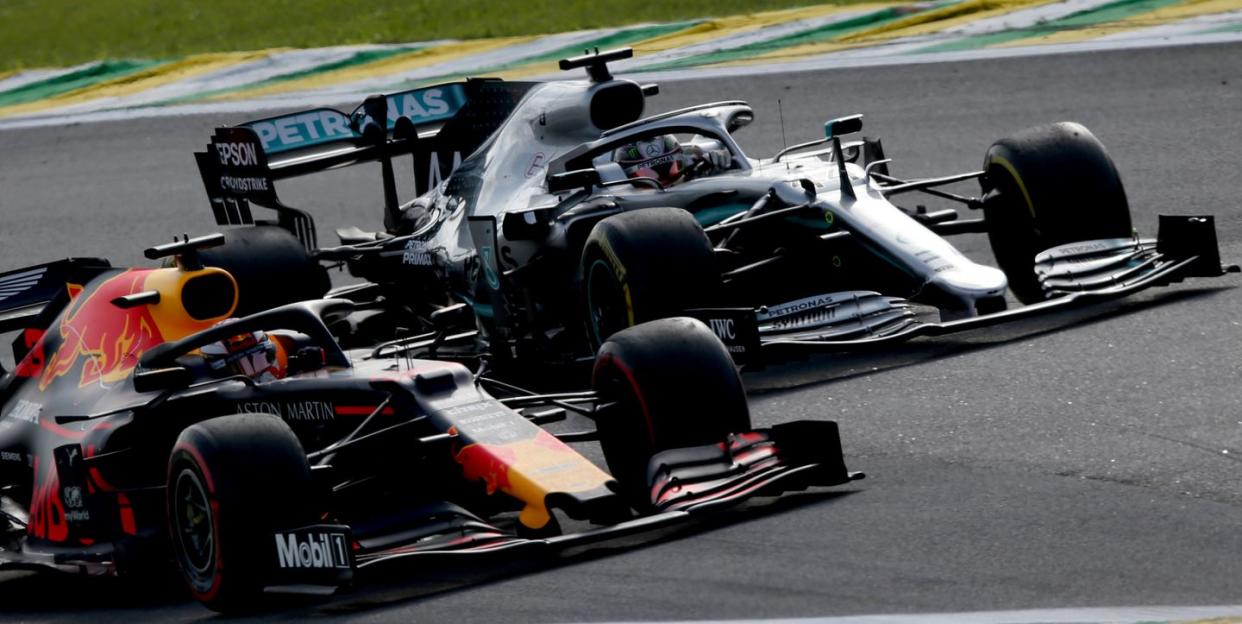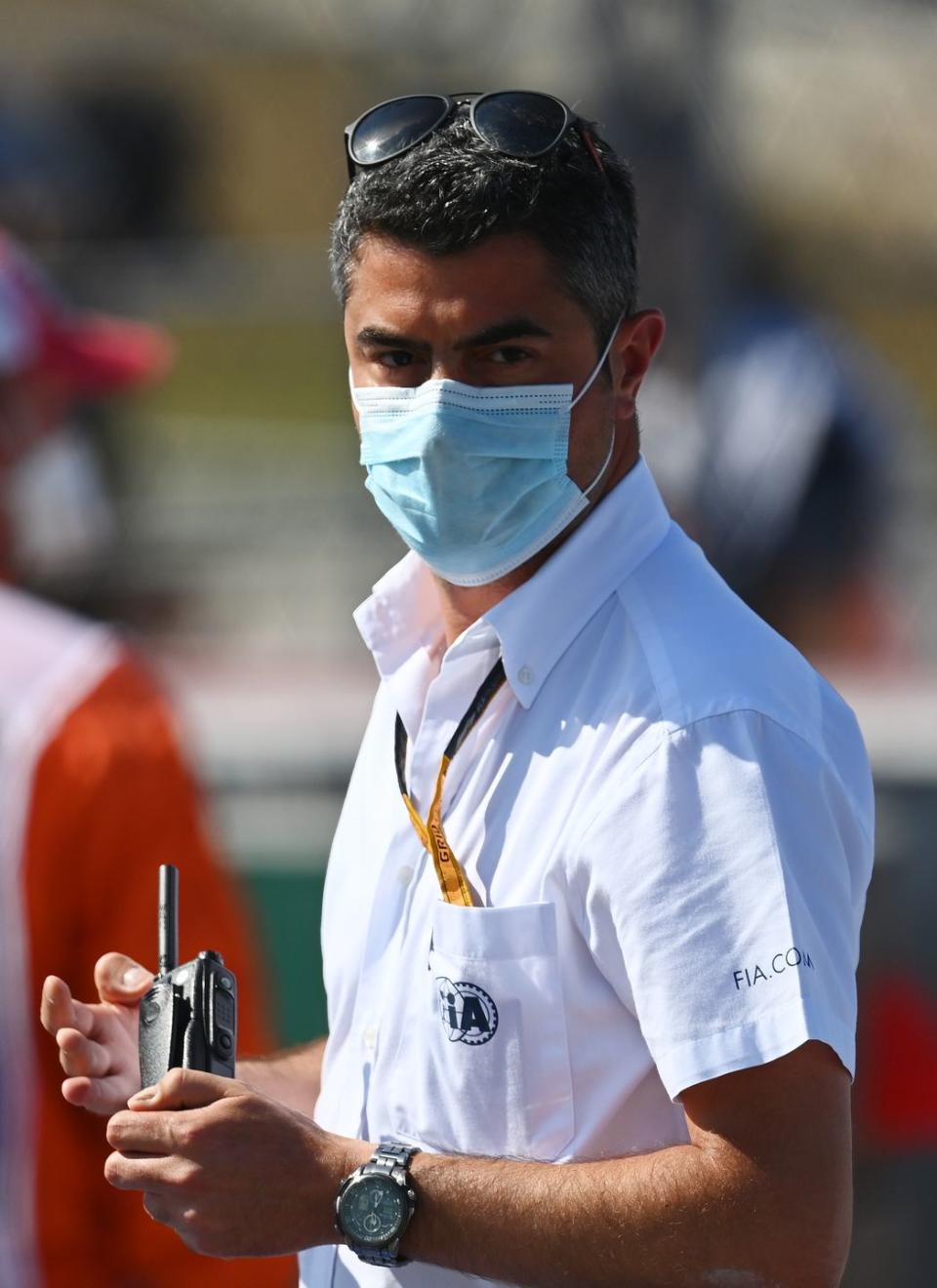F1 Driver Discontent Over Slow, Inconsistent Rulings Clouds Otherwise Sensational Season

- Oops!Something went wrong.Please try again later.
- Oops!Something went wrong.Please try again later.
Max Verstappen and Lewis Hamilton’s Formula 1 title tussle is expected to go down to the wire in the season-finale Abu Dhabi twilight on Dec. 12. It has been a phenomenal season.
But off-track it has not been the clearest or cleanest of campaigns for the sport.
Officiating in sport is essential, ever-evolving, and potentially open to interpretation—nearly every decision leaving some smiling and some still not happy. It is the same in Formula 1.
Formula 1’s race director role is held by Michael Masi, an amenable Australian who was parachuted into the job for 2019 following the death of previous race director Charlie Whiting at age 66. Each weekend there are four stewards from the pool, who assess incidents, and apply sanctions as per the interpretation of the rulebook.
It is not an easy job, particularly with team principles, team managers and drivers defending their cause (as is their right) and occasionally venting to the media, sometimes subtly inferring bias, or sometimes being plain insulting.

In recent weeks, there have been a series of lengthy queries and investigations that have lingered often into the day or even days following the incident.
The disqualification of Lewis Hamilton from qualifying in Brazil was not confirmed until the following day. Mercedes’ Right of Review hearing was adjourned on one day and a verdict delivered the next. A summons in Qatar for drivers who breached yellow flag rules was issued over two hours after the session finished, the hearings were not held until race day, with the outcomes delivered less than two hours before lights out. For a sport so technologically advanced its judicial structure can be painfully slow.
Masi has understandably defended the situation.

“One of the things, and I’d say all of you (journalists) around this table have asked for, [is] for more description in decisions rather than just saying ‘this person is guilty’ or ‘this person is not guilty’,” said Masi. “You actually want as much of an understanding as possible of the process, (such as) if there were any other similar types of cases.”
That takes time, says Masi. The other part is the teams need to be given the opportunity to present their case, highlighting the time this can take, while also factoring in elements such as other commitments and curfews.
Masi continued: “I think sometimes the stewards would be happy to just write ‘this person has breached the rules and end of story, but then we’ll go back a few years and most of you around this table have said you want more description.”
And why did it take over two hours to issue summons after qualifying? Well, Masi and his team dissect the footage from each car, take a look at the data, then have to determine a potential breach. That is then passed to stewards for them to issue a summons. This all takes time. And it is understandable. Masi is doing his job.
Inside the Formula 1 bubble, all the processes are meticulously followed. And of course, everyone wants the correct decision to be made in the interests of fairness—and sometimes they can’t be rapid decisions. But it is becoming an all too regular setback. A re-think to the system itself is needed long-term. People want to watch an event and know the result there and then, not have to wait until the next day.
Mercifully, post-race in Qatar, there were no controversial clashes or incidents that required investigation. And that’s a good thing, because the drivers are still a little unclear on racing etiquette.
Formula 1 officials have regularly conversed with drivers (a lengthy briefing is held each Friday) on the precise etiquette as they try and find the right balance. No-one wants petty incidents penalised but no one wants questionable driving unpunished – and consistency is key.
The Verstappen-Hamilton incident in Brazil, in which both went off-track while battling for the lead, raised eyebrows and was the center of attention in Qatar. But there have also been other dubious cases this year with some incidents sanctioned and others let go. Drivers still aren’t exactly sure what will and what won’t be penalized.
“Unfortunately there was no outcome (from the briefing),” said Williams’ George Russell, who is a director of the Grand Prix Drivers’ Association. “At the end of the day we all want to race hard but that (Verstappen/Hamilton in Brazil) was hard and unfair.”
“It’s not clear,” said Hamilton on conduct. “Every driver, except for Max, was asking just for clarity. Most drivers were asking for clarity, but it wasn’t very clear.”
“We are all agreed—we need more consistency,” said two-time champion Fernando Alonso. “We need black and white rules because when they are grey, sometimes you feel you benefit from them and sometimes you’ve been the idiot. I think it’s not only an FIA issue, it is the drivers, teams, FIA, we all need to work together to have better rules.”
Ferrari’s Carlos Sainz outlined that “we need to rethink a bit the whole approach because the way it’s been working this year it’s pretty clear the drivers really don’t understand what is going to happen depending on what you do. I need to know if I can push the car on the outside wide and if I do what I’m going to get. We got some answers from Michael, but we know that sometimes Michael and stewards are not always exactly the same. I think next year we should do a good step. We need to make it as much black and white as possible, and then see.”
Several other drivers voiced similar opinions amid a widespread desire for consistency.
Masi offered his thoughts on the situation: “I think it’s been made clear to them what is expected, some of them agree, some of them disagree. We’ve given them some overall guidance but also been very clear on the fact that each and every case will be judged on its merits. You need to look at the whole situation and scenario. You can’t have two exactly the same incidents; you have slight nuances. Everyone tries to blanket incidents of saying ‘that’s all the same’ but they’re not, that’s where I think at times the perceived inconsistency comes into (play).”
That may be the case, but when drivers are signing from the same hymn sheet it’s clear that all is not rosy.
There will always be anomalous cases and some unhappy parties, but the discontent from drivers on the exact etiquette is something that needs to be cleared up for 2022.

